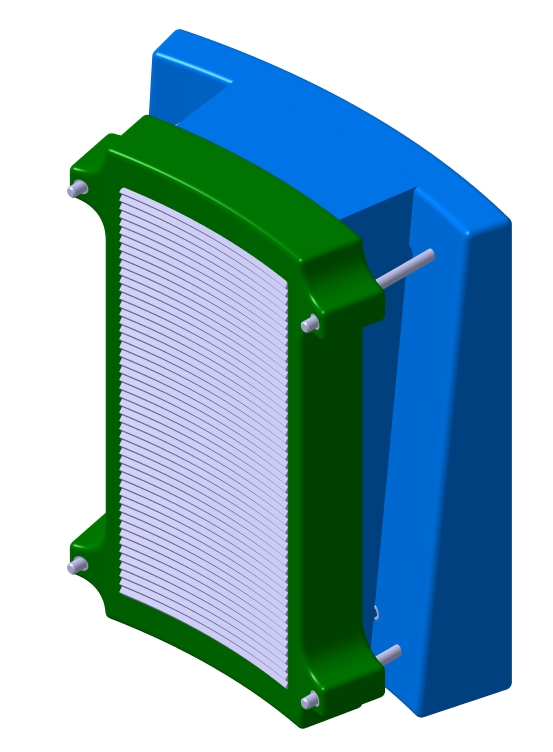NCC research supports new green solution for wind turbine installation

A feasibility study conducted by the National Composites Centre (NCC) on behalf of Cedeco has shown that an innovative composite gripper solution could reduce the environmental impact, cost and time of installing offshore wind turbines.
Cedeco, an inventive engineering SME working in offshore oil and gas and renewables, utilised funding from Offshore Wind Growth Partnership (OWGP) to approach the NCC to investigate if composites could offer a sustainable, cost-effective, materials solution to manufacture a gripper that holds an offshore wind turbine leg in place.

Through conceptual designs, cost modelling, material and process assessment and a life cycle assessment, engineers at the NCC established that using composite materials for the grippers could potentially decrease the targeted cost point by up to 50%, cut the installation time by up to 50 days on a 100 turbine farm, and reduce the environmental impact of the turbine installation by up to 40%. Switching to a composite gripper could also remove unnecessary structures from the turbine leg and jacket and reduce the overall size of the wind turbine legs.
These factors all combine to reduce the barriers currently faced when creating new wind farms. In improving the return on investment, they are a more attractive proposition for investors, and the reduced carbon footprint reduces the negative environmental impact of installing wind turbines further promoting them as an environmentally friendly power generator.
The project was funded by the Offshore Wind Growth Partnership (OWGP)’s first ever Grant Funding Competition, which is awarded to projects exploring advanced manufacturing solutions for offshore wind.
"As with any project there is always some hesitation at the outset, but we are delighted with the results of the feasibility study,” said Jacqueline Morrison, commercial lead for Cedeco and IUK Women in Innovation award winner.
On working with the NCC team, Iain Steven noted: “The enthusiasm of the team was palpable with many of the outputs produced going beyond our expectations. The outcomes from the various work pages have helped cement some of the earlier work produced by Atkins while also underpinning much of the data submitted at this stage to DNV. The carbon reduction savings identified as part of the life cycle assessment are additional proof of the benefits the non-grouted connector can deliver.”
Cedeco are now applying for a IUK SMART grant with Atkins, the Offshore Renewable Energy Catapult (OREC) and the University of Strathclyde to continue to develop the engineering and work towards scaled testing.
Morrison continued: “As a micro-SME we know that our route to market will be through industry collaboration with the likes of the NCC and OWGP and working together with industry partners including a fabricator, installation contractor and wind developer. With the help of OREC we created a commercial roadmap that sees the product coming to market mid-2025 and we are always on the lookout for new partners willing to travel with us on that journey. I'm glad we took those initial steps to apply for OWGP funding and I would encourage other companies, no matter what their size, to do the same. We're really looking forward to continuing our journey with the NCC and hopefully OWGP too.”









